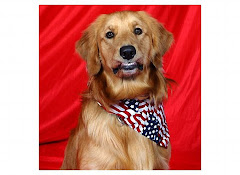Do you see what I see?
I found this article in a newsletter I receive and thought I would share it. Pretty interesting stuff. The picture above is how dogs actually see color. It seems they can see blues and yellows, but not red.
Black & White Vision, Symphony of Smells: The Science of Dog Senses.
By. Warren F., for Canacreek.com and Bloggingpaws.com
While humans and dogs are inseparable, they clearly see the world differently. And hear, and definitely smell.
Everyone knows that dogs see in black and white. Or do they? The commonly held belief was that dogs are color blind, but recent research has shown that dogs do see colors, if not the same variety available to the human eye. But dogs are much, much better than humans at detecting motion, which is why they can spot a bird in flight or a running cat, seemingly miles away while, you're scratching your head looking for the cause of his agitation. They can also see very well in the dark, something humans aren't very good at. As for visual details, as most dog owners will attest, are somewhat lacking compared to their human counterparts.
Hearing is another area where dogs excel. Dogs can hear at four times the distance of a human, and their ears gather much more information within that sound than our own rather primitive eardrums. But smell is where dogs go so far beyond humans it's almost supernatural. A dog's sense of smell is 100,000 times better than that of a human, meaning if you're making a stew, you smell....stew. Your dog can discern every single ingredient in the stew, and is probably itching to eat all of it at once.
On a more practical level, when you take your dog to the park, he's sniffing the ground in order to check out what's been there before...and that can include other dogs, squirrels, people and a myriad of other creatures: a symphony for their senses indeed.
Read More......














































